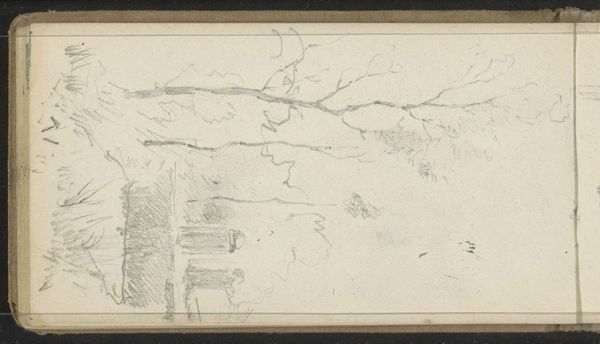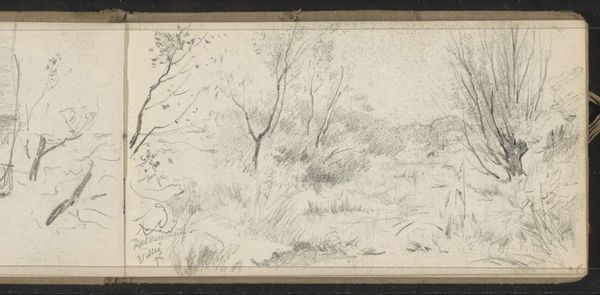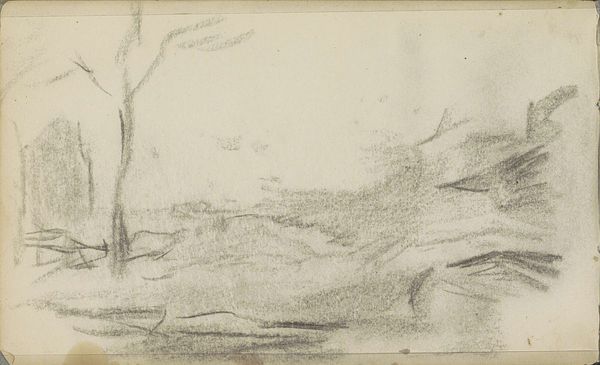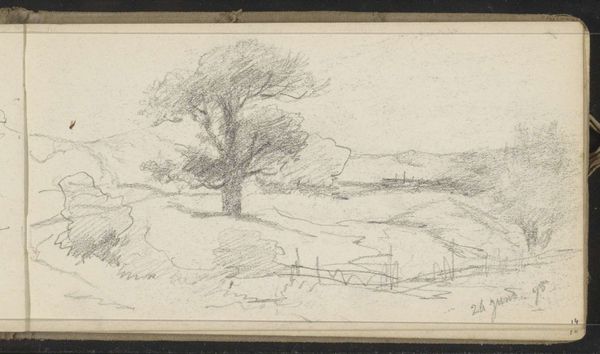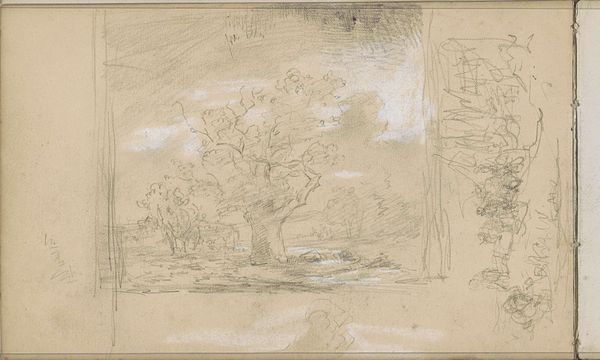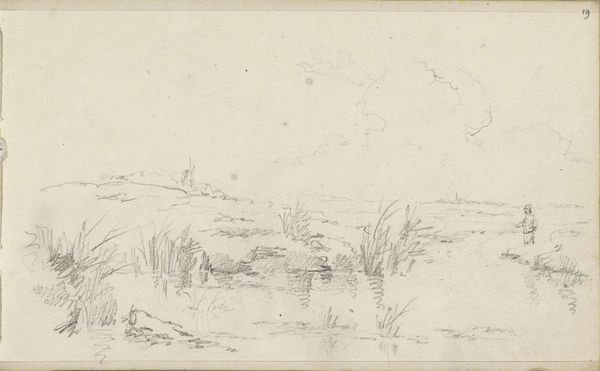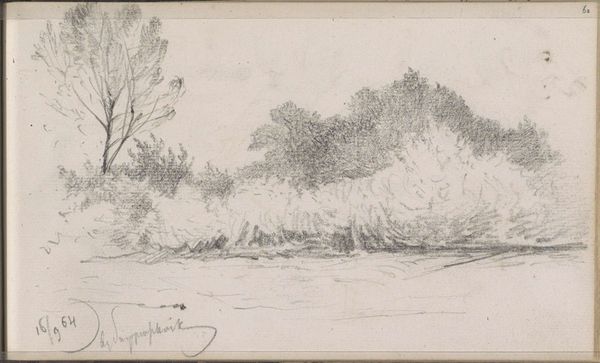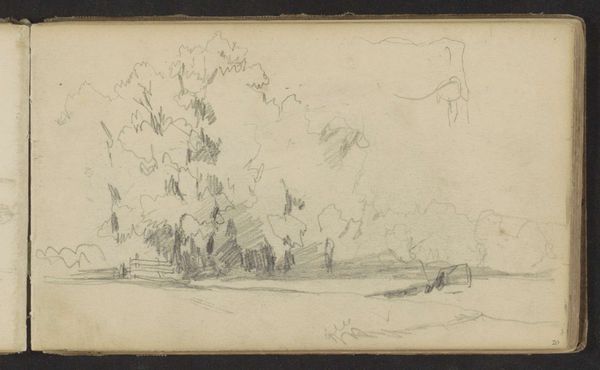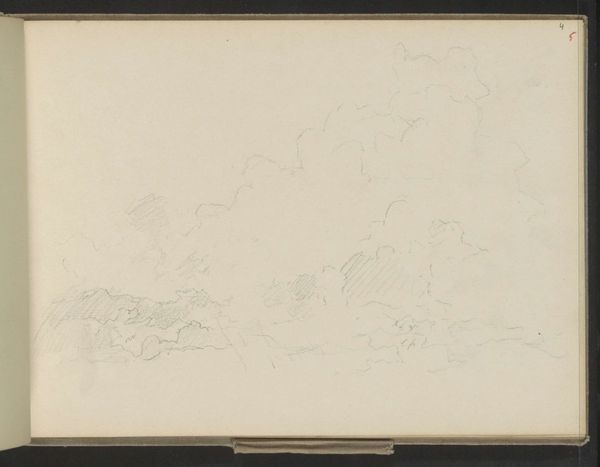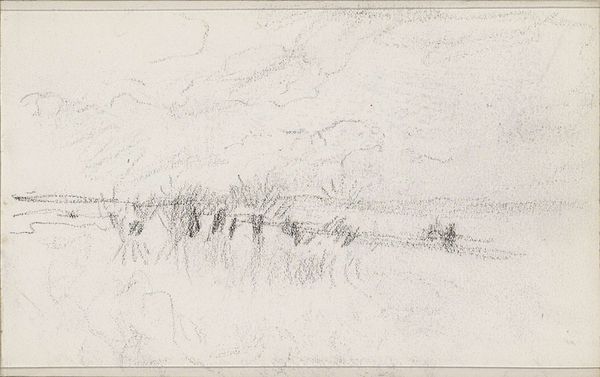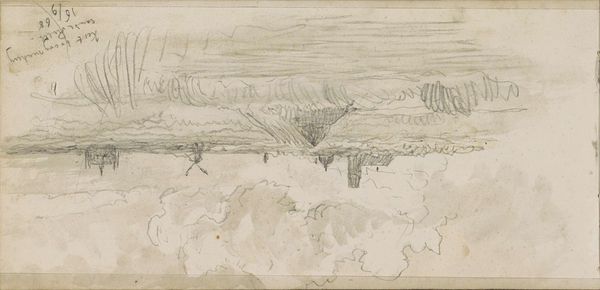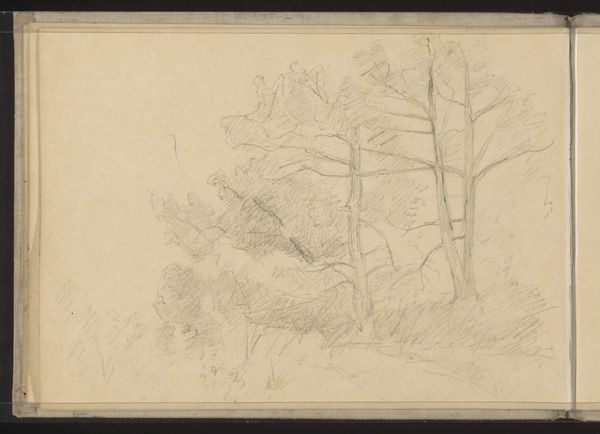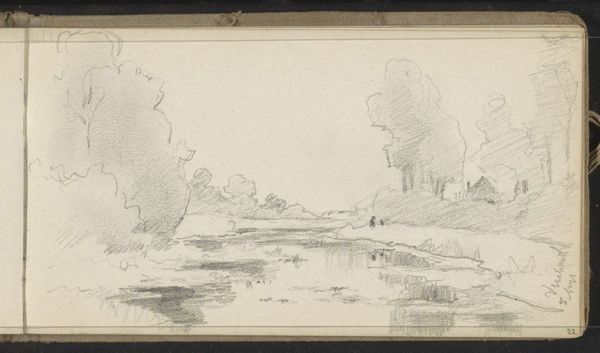
Dimensions: height 104 mm, width 179 mm
Copyright: Rijks Museum: Open Domain
Willem Cornelis Rip made this pencil drawing of a figure in a rowboat near a waterfront at an unknown date. This sketch encapsulates the essence of the Hague School, a late 19th-century Dutch art movement. Rip, along with his contemporaries, sought to capture the everyday life of the Netherlands, emphasizing the rural and working classes. This aesthetic choice was a conscious departure from the more academic and idealized styles prevalent in earlier art traditions. The sketch's focus on a solitary figure in a rowboat is reflective of the Netherlands' deep connection to its waterways and the working lives of its people. The subdued tones and emphasis on natural light further ground the image in the realities of Dutch landscape and life. To fully appreciate Rip's work, one might delve into the archives of Dutch art institutions, exploring exhibition catalogs and artist biographies. Understanding the socio-economic conditions of the Netherlands during this period enhances our appreciation of art as a reflection of its time.
Comments
No comments
Be the first to comment and join the conversation on the ultimate creative platform.
